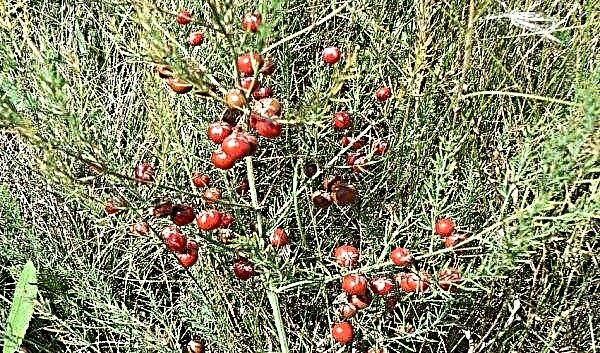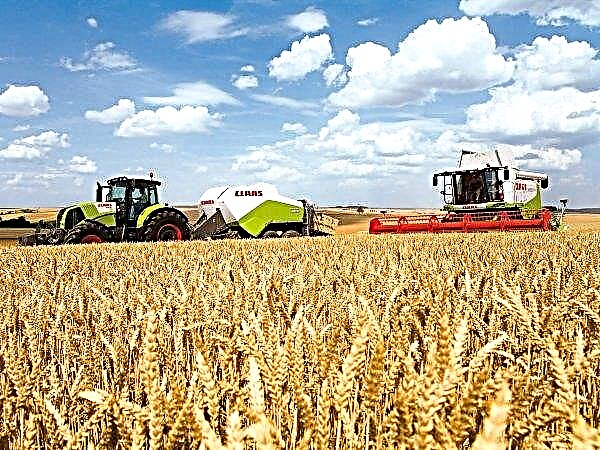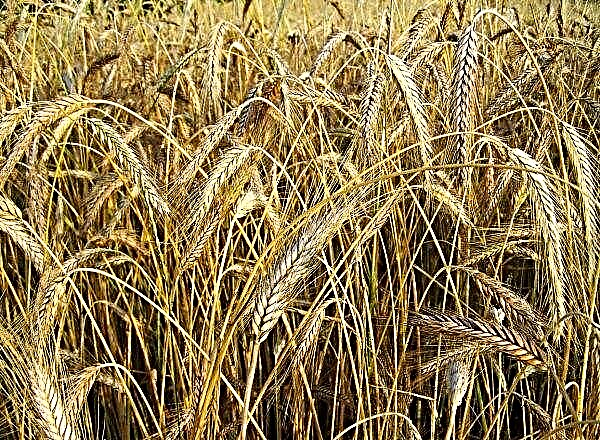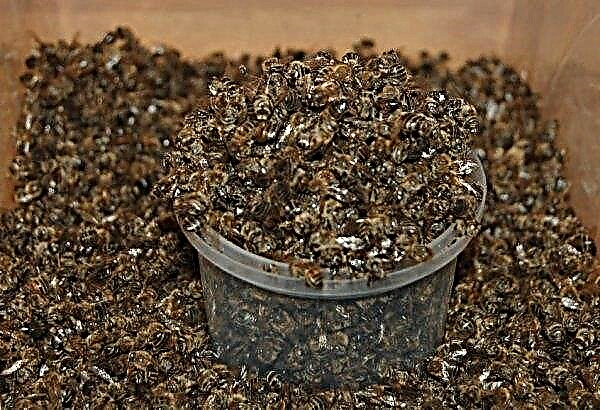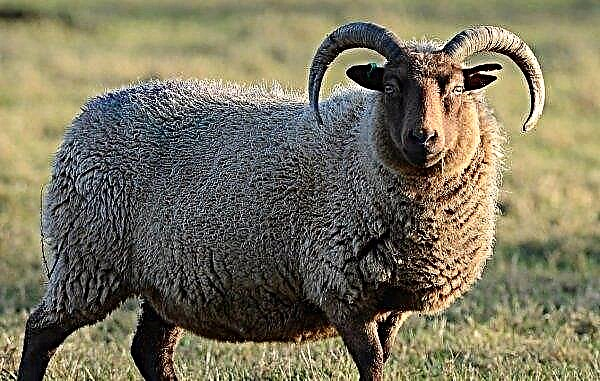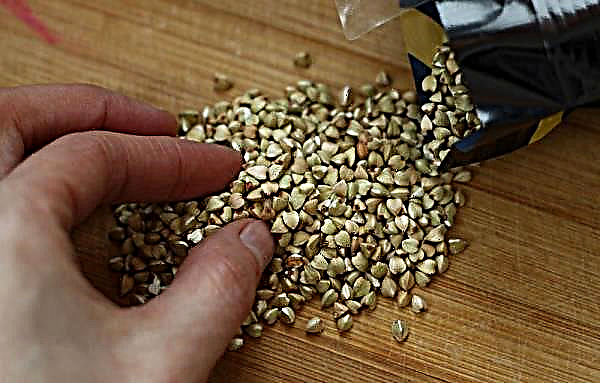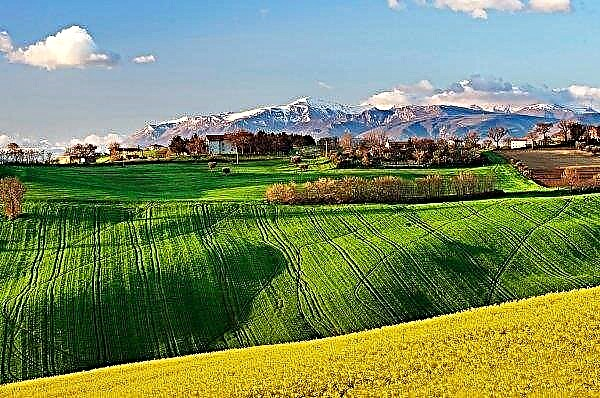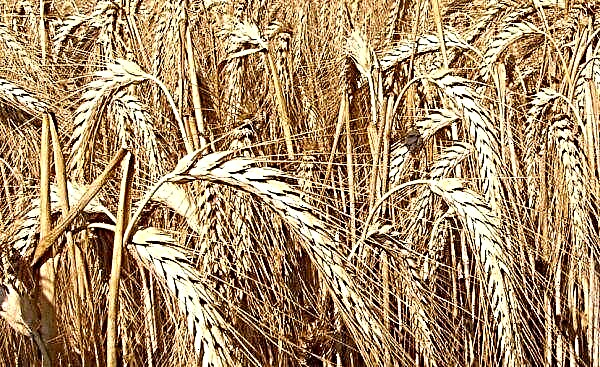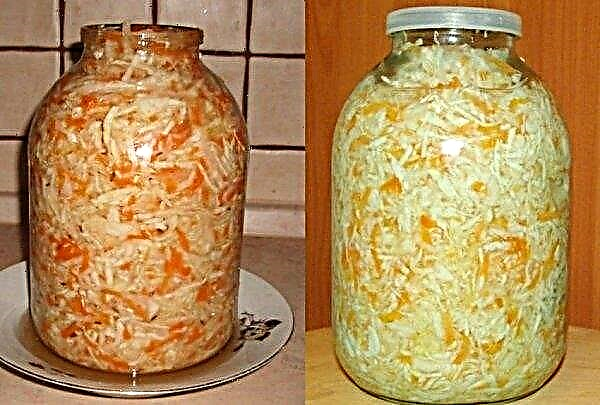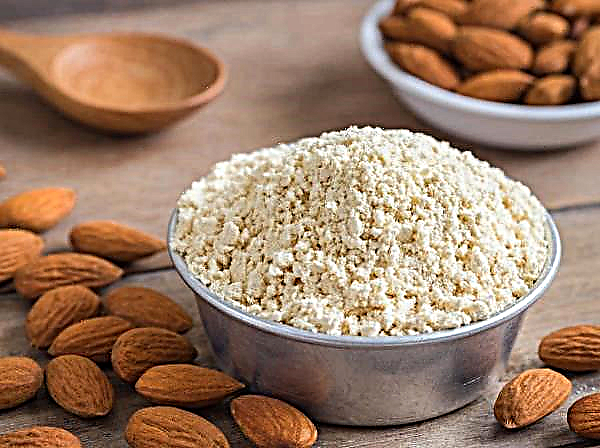Hyacinth is a beautiful flower that can be easily grown at home, not only on the site, but also in a pot on the windowsill. The latter option is often used to obtain inflorescences for a certain holiday - New Year, March 8, or another important date for the grower. Distillation is a fairly simple process, if you know all the nuances. About them and is described below.
Pot preparation
The capacity for growing should exceed the size of planting material at least 1.5 times. Openings are required in the bottom of the container for oxygen circulation in the soil. When choosing a container, the number of bulbs should also be considered. So, if it is a single landing, a pot of 15 cm tall and a diameter slightly larger than the planting material will do.

If you want to grow several copies in one container, you need to take into account that the bulbs should not come into contact with the walls of the container, and between them withstand a distance of at least 2 cm Before using the pot for its intended purpose, it must be disinfected - rinse with boiling water (if the material allows) or rinse with a pink solution of potassium permanganate. Then, at the bottom of the dry tank, lay a drainage layer about 5 cm thick of coarse sand, pebbles, small gravel, etc.
Did you know? According to legend, hyacinth got its name from the Greek god Apollo. At the site of the death of his favorite Hyakintos, this beautiful flower grew.
How to properly prepare the soil for planting
For driving hyacinths, a light, loose soil is required. It can be purchased at specialized points or prepared independently. To do this, the earth from the garden, peat and coarse sand are combined in equal proportions, everything is thoroughly mixed. If the soil is acidic, it is worth adding dolomite flour according to the instructions on the package.

The substrate is poured into the pot, leaving a third of the height empty (not forgetting the drainage layer), slightly compacted and watered. No additional additives are added to the planting soil mixture, since all the necessary useful substances are already contained directly in the bulb.
How to plant a bulb in the ground
Initially, you need to take care of the planting material. For container distillation, large bulbs with a circumference of 19 or more centimeters are selected. If the seed material was collected on its own, then it is worth selecting the largest specimens. Before planting, it is necessary to conduct a visual assessment of the bulbs - they must be dense, heavy, without rot and other visible damage. Then you need to soak them in a pink solution of potassium permanganate for 5-10 minutes to prevent fungal infections.
You need to land like this:
- The bulb is placed in a pot with a substrate so that its top is at the level of the edge of the container. Only one third of it should be in the earth. A distance of 2 cm is maintained between specimens during mass planting, and voids are also covered with a substrate.
- Further, the earth is slightly moistened, given that excess fluid will lead to rotting of the roots. Then the pots are covered with dark, dense and air-permeable material, sent for cooling, which will last about 3 months. For wintering, the lower shelf of the refrigerator, a warm garage or a porch are suitable - any place where a constant temperature of + 4 ° ... + 8 ° C and dark is kept.

As for the timing of planting, they are determined based on the desired time for obtaining inflorescences. In this case, the varietal characteristics of each hyacinth are also taken into account. They come with early, medium and late flowering.
Important! Flowering in the container lasts about 14 days. To extend it for a week will help carrying the pot overnight in a cooler room.
So, early varieties planted at the end of October will please the grower in December - January. These include Bismarck, Innosens, Marconi, Blue Medjik, etc. With an average flowering period, if planted in early November, the hyacinth will bloom in February - March. For this purpose, Blue Sky, Amethyst, White Pearl, etc.
Late flowering varieties planted in December will bloom by April. Well established Woodstock, Anna Lisa, Hollyhock. If the first two varieties will be driven out from 10 to 14 weeks, then the last - 2 longer.

Further Hyacinth Care
When hyacinth reaches 9–10 cm in length with leaf plates, the covering material is removed from the container and transferred to a warmer place with good light access. Throughout the month, the development of the peduncle occurs. At the same time, the air temperature should not exceed + 20 ° С. With overestimated rates, the flowering period is reduced.
It is necessary to accustom the plant to such temperatures gradually. A sharp change in the conditions of detention will lead to a rapid growth of foliage, which will negatively affect flowering. In order for the peduncle to grow long, it is necessary to control the light mode. To do this, use a dark cardboard cap or an opaque paper cup.
Did you know? In the language of flowers, white hyacinth symbolizes the delight of the purity and beauty of a woman you like, red or pink indicates passion and tenderness, yellow is a sign of jealousy and resentment. Blue flowers were presented to each other by the couple as a sign of respect, fidelity and happily lived years.
At the first stage, cover the pot for the whole day, then gradually reduce the time of laying. Use this technique before raising the peduncle above the leaves, while covering the plant only part of the day. With blooming, the shelter is removed.
Watering
After wintering, pots should be watered sparingly. To do this, use water at room temperature. It should be clean, free of chlorine and other impurities. You can draw water from the tap and let it stand in an open bowl for 2-3 days, but rain or melt is optimal. Hyacinths do not need to be sprayed.

Fertilizer and fertilizer
During the period of intensive growth and staining of the flower, you can use universal additives for bulbous or brightly flowering plants, purchased at specialized points of sale, using them according to the instructions. This procedure is carried out weekly until the end of flowering. Then top dressing stops. The use of fertilizers will add color to the coloration and extend the flowering period.

Humidity and air temperature
Hyacinth will bloom for a long time at the appropriate temperature. The optimum air will be for distillation at + 23 ° С ... + 25 ° С, during flowering - + 16 ° С ... + 18 ° С, with a humidity of 75%. Humidification can be carried out using a spray gun or place pots in boxes with wet sand or perlite.
How to care during flowering
When flowers appear, it is necessary to reduce the temperature to + 12 ° ... + 15 ° C. Also, to prolong flowering, it is worthwhile to reduce the access of light to the plant. Top dressing also contributes to an increase in the duration of this period.
Hyacinth Pruning
Cut flower stalks after drying. At this time, do not fertilize. Watering is halved, but continues until the leaves dry out. You do not need to cut them, because thanks to them, the bulb is fed: they must die out on their own.

How hyacinths breed
Reproduction of the described type of flowers is a time-consuming process, since children on the bulbs are rarely formed and in small quantities. There are several methods to stimulate their growth.
Important! When storing bulbs in a refrigerator, avoid proximity to apples: the gas released by these fruits is harmful for the development of the peduncle.
More details about each of them:
- Bottom cutting - with this method, dug bulbs are placed under a strong pressure of water, which will help get rid of old scales and earth. Then they are laid out in one layer to dry. This can be done outdoors if the weather is dry or in a well-ventilated area. After 7-10 days, you can proceed to the cutting procedure: a signal of readiness will be an easy separation of the roots. For cutting, you need a sharp knife - with its help, a wedge-shaped incision is made and the entire bottom is removed completely, together with the central kidney. The cut point is dusted with powdered charcoal or activated carbon. Then perlite is poured into wooden boxes and the planting material is laid out with slices up. The container is placed in a bag made of polyethylene, which will help maintain the necessary microclimate for the bulbs. It is necessary to maintain the nursery at a temperature of + 30 ° C with 100% humidity inside it. After 10-12 weeks on each bulb, children will appear about 0.1 cm in diameter with root primordia. If the preparation was carried out in early summer (June - July), then they can be planted together with new shoots in open ground, while warming them with a 15 cm layer of peat. In a later operation, the bulbs are placed in boxes with ground notches down. Store them at a temperature not exceeding + 6 ° C, with a lower mark of + 2 ° C. To do this, the bottom shelf of the refrigerator or the basement is suitable. In the open ground produce landing in the spring. At the end of summer, the bulbs are dug up, many children will be educated on them. They are planted at the beginning of autumn shallowly (10–12 cm) at a distance of 5 cm from each other and 15 cm between rows in multi-row planting. Then a protective layer of peat 10-15 cm thick is applied, which is removed after the first winter and left after the second. In the third spring, young growth should bloom.

- Bottom notching - here it is not completely removed, but notches are made on it in the form of a cross with a depth of about 6 mm. On small bulbs make 2 notches, on large ones - 4. Then they are processed with powdered charcoal and placed for 24 hours in a warm and dry place. Further, the same actions are carried out as in the first case. With this method, children are formed much less (up to 15 pcs.) Than when using the previous one, but they will be larger.

- Reproduction by scales - while small (about 5 cm in diameter) planting material is divided into 5-6 parts, the scales are separated from the bottom. The cut sites are dusted, as in the other two cases. The scales are stacked in a bag made of polyethylene, which is filled with sand (river, clean), perlite or charcoal. Then they tie and store for at least 1.5 months in a room with partial access to sunlight (directly on the package itself) at + 25 ° C, and the same period at + 17 ° C ... + 20 ° C. After the formation of young animals, storage and landing are carried out as well as in the first case.

How and when to dig hyacinths
It is worth removing hyacinths from the pot only after yellowing and dying of the leaves. As for digging from the ground from the site, this should be done in June - July, the leaves will also become a signal. Do not leave the bulbs in the soil for the winter: if they do not freeze, then the flower stalks will be weak and diseased, and the next season the plant will die.
Digging Process:
- The extraction must be carried out carefully using a pitchfork: with a shovel you can damage the bulbs.
- The extracted material is cleaned of the earth and excess scales, cut off the remaining leaves.
- Then it is laid out in airtight containers and dried for about 5 days.
- Scales and roots are removed from dry bulbs, large children are separated and sent for storage.
- The first 2 months maintain the air temperature in the storage within + 25 ° С, in the next month it is reduced to + 17 ° С. In this case, the room must be ventilated, and the material for planting periodically sprayed with warm water to prevent it from drying out.

How to deal with diseases and pests
When using infected planting material, improper care, and adverse weather conditions, hyacinths can be affected by diseases and be attacked by pests.
The causes of container growing problems and methods for their elimination are as follows:
- Hyacinth does not bloom - content at high air temperature. It is necessary to rearrange the flowerpot in cool and cover it with a dark cardboard cap.
- Flowers rot and crumble - waterlogging of the soil. Reduce watering, do it only after the soil surface has dried. Irrigate only on the walls of the pot, avoiding moisture on the flower.

- Buds fallif water gets on them. Do not spray hyacinth, especially during the flowering period.
- Leaf plates turn yellow - The likely cause may be a draft. Change the location of the pot.

As for diseases and pests, the symptoms and treatment are as follows:
- Bacterial Yellow Rot - manifested by black dots on leaf plates and mucus on the bulbs. The causes of infection are insufficient air circulation in the pot and increased soil moisture. There is no cure for such a disease - you will have to get rid of the flower along with the soil, and disinfect the flowerpot. For preventive purposes, planting stock is treated with phosphorus-containing preparations (Fitosporin, Maxim, etc.).

- Onion root tick - the plant does not grow well, foliage prematurely turns yellow and falls, flowers lose their decorative appearance, and voids with brown powder form in the bulbs. The reasons are cold and damp in the room. Sick bulbs before planting must be placed in a container with hot (+ 40 ° C) water and kept in it for 5 minutes. In case of damage during the growing season, spraying with acaricidal preparations ("Keltan", "Rogor") is carried out according to the instructions.

- Aphid - small insects of green color appear on all parts of the flower. The reason for their appearance is very dry air in the room. It is worth spraying the plant with insecticides (special soap or means "Actellik", "Decis") according to the instructions.

- Nematode shoot - leaves and stems are deformed, bulges and thickenings form on them. A pest appears in dry air and infected planting stock. For treatment, biologics (Fitoverm, Akarin) are used according to the instructions, and the bulbs and equipment are disinfected with a 1% potassium permanganate solution before planting.

Hyacinths are universal onion, which are suitable for cultivation in the garden, in the container and for cutting. Following the basic rules for planting and care, you can enjoy a wonderful view and aroma almost all year round, but the most important thing is that you can grow a flower that will bloom for a certain event.










